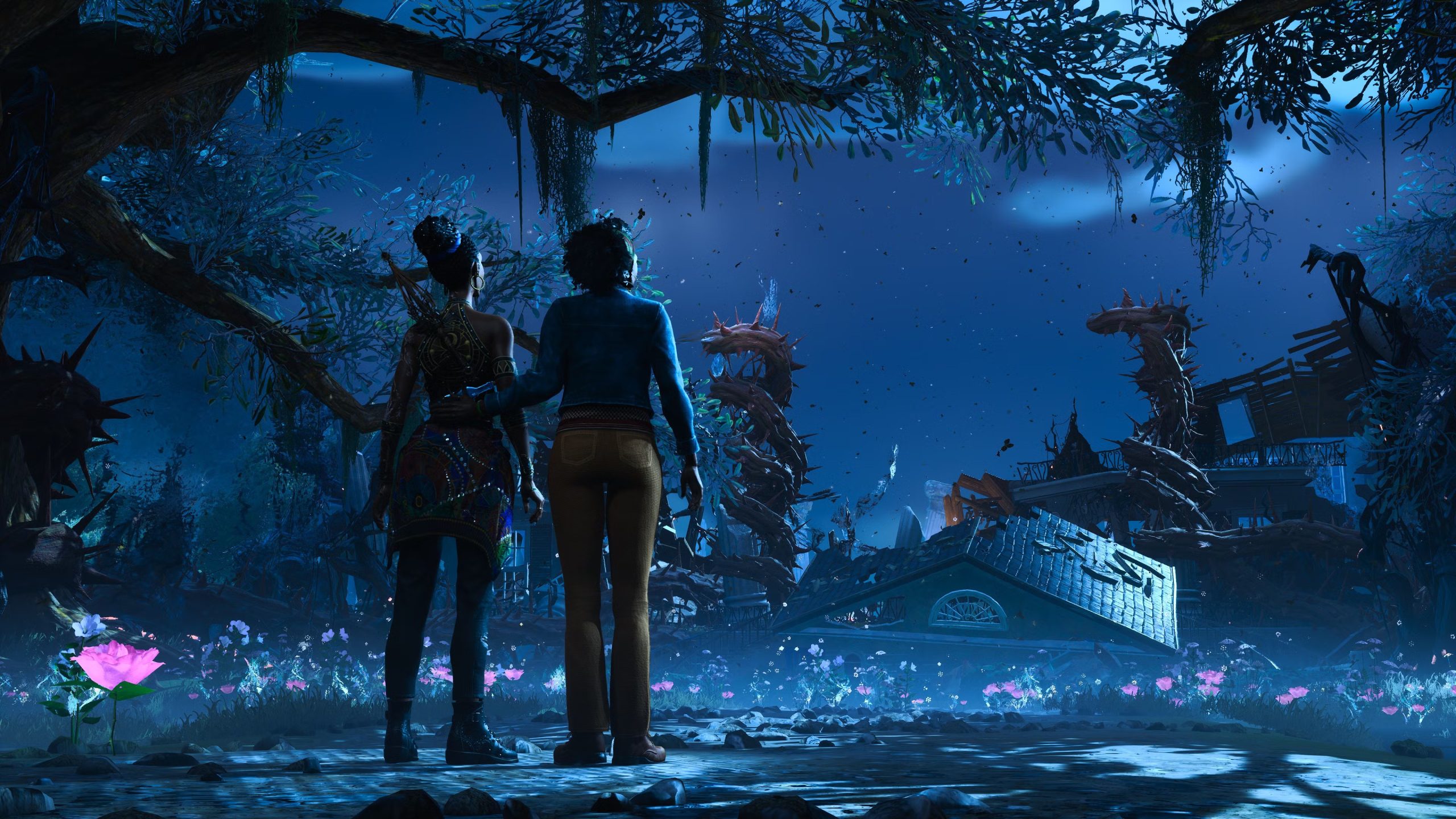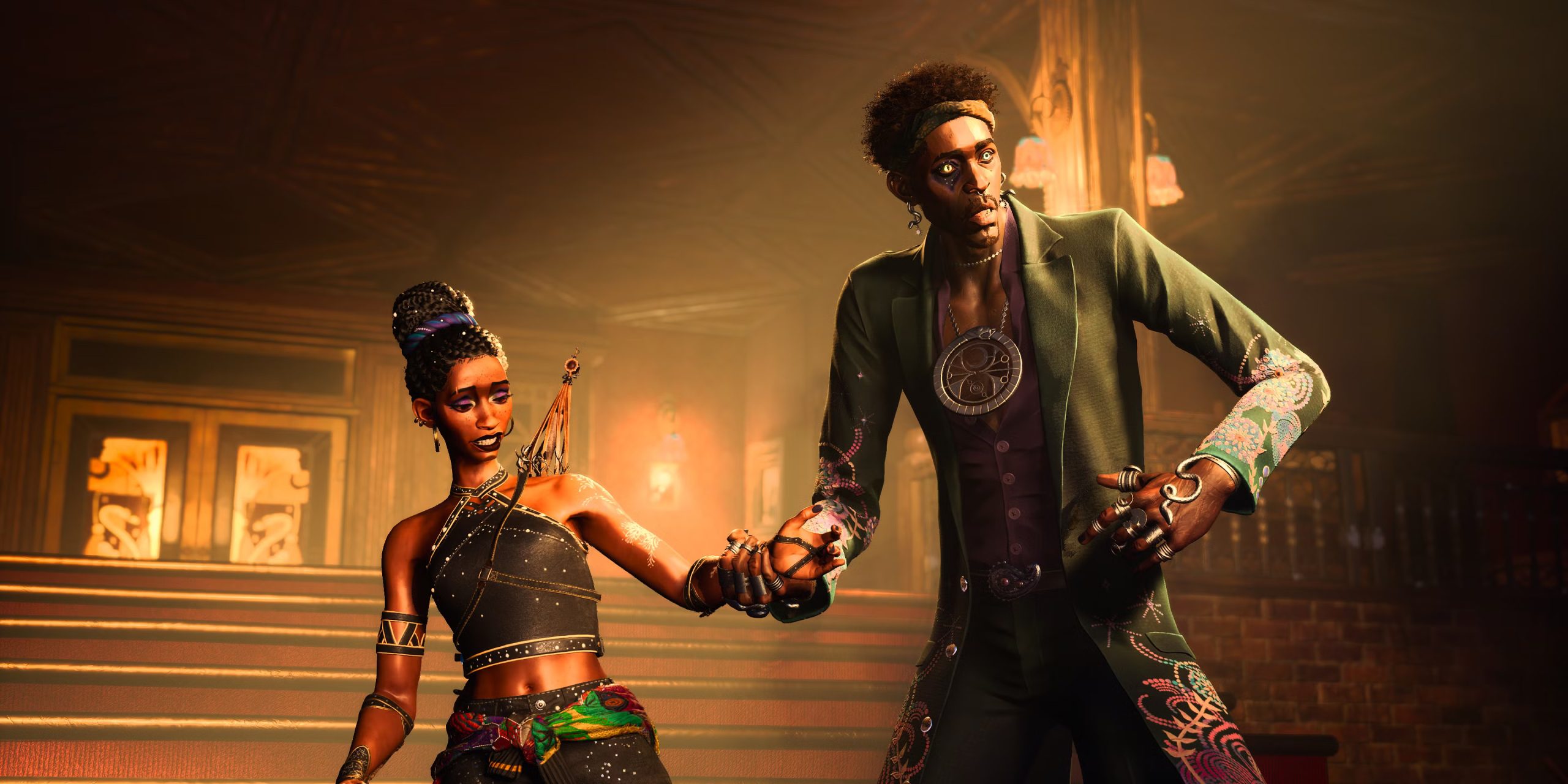South of Midnight is a Southern Gothic adventure game developed by Compulsion Games that follows Hazel on a journey to find her mother, Lacey, who was swept away by a hurricane flood. As Hazel searches for her mother, the game reveals much more, incorporating various side stories that explore grief, loss, and the haunting history of the American South.
While the main storyline focuses on Hazel’s emotional journey, it evolves into a complex narrative that explores the consequences of unresolved grief and the need for healing.
Hazel’s journey leads her to a strange place known as the Town, which exists on the edges of reality. This otherworldly domain is ruled by Kooshma, the King of Dreams and Nightmares, who traps people and their spirits in an endless realm of longing.
Within this place, Hazel meets Roux, Kooshma’s second-in-command, and participates in a surreal dance at Kooshma’s Cabaret. This moment marks a significant turning point in the story, pushing Hazel closer to her ultimate goal of rescuing her mother, while also confronting the powerful forces of Kooshma.
Hazel Battles Kooshma’s Forces to Free Her Mother, Unraveling Past Trauma and Stigma
With Roux’s assistance, Hazel is able to locate her mother, who is stuck in a trance and reliving the traumatic moment when Hazel nearly drowned while trying to save her. Hazel was, in fact, saved by her magical abilities during that moment, but her mother remains unaware of this.
In her efforts to free her mother from the haunting vision, Hazel battles Kooshma’s forces—referred to as Haints—and faces the manifestation of Stigma, a force tied to past traumas. The reunion between Hazel and Lacey is bittersweet, as the mother and daughter confront the grief that has kept them apart.

Roux plays an important role in Hazel’s quest, offering help in exchange for a favor to be paid later. As Hazel continues her fight against Kooshma, she uses a magical bottle to trap Stigma, which represents the emotional scars of those haunted by the past.
Despite Hazel’s success, Kooshma proves to be a nearly unbeatable force, and the true nature of Roux’s deal with Hazel is revealed later when Hazel confronts her grandmother, Bunny. Roux’s intentions are more layered than initially believed, and the favor he demands from Hazel will lead to a major turning point in the game’s conclusion.
Hazel Confronts Bunny’s Obsession with Grief, Highlighting the Consequences of Unresolved Loss
In the final chapter, Hazel faces her grandmother, Bunny, who has been consumed by grief over the tragic death of her daughter, Cherie. Bunny’s obsession with resurrecting Cherie leads her to use dark magic, which causes corruption and destruction around her.
Hazel attempts to persuade Bunny to accept the reality of her daughter’s death and move forward, but Bunny refuses, clinging to the hope of being reunited with Cherie no matter the cost. This emotional confrontation reflects the dangers of refusing to let go of the past and highlights Bunny’s inability to heal from her loss.
One of the central themes of South of Midnight is the impact of grief on individuals and communities. The game explores how holding on to unresolved grief can prevent healing, not just for the person suffering but also for those around them. Throughout the story, Hazel helps others by unraveling Stigma and guiding them toward acceptance of their pasts.
However, Bunny represents the antithesis of this process, choosing to dwell in her sorrow rather than accept help. Hazel’s journey involves making difficult choices between offering mercy to those who cannot change and delivering justice to those who have caused harm.
The game’s conclusion is both heartbreaking and enlightening. Bunny’s decision to enter Kooshma’s realm is framed as both a form of mercy and justice. It offers her a false but comforting reunion with her daughter, yet it also symbolizes her inability to let go of the past and face the reality of her grief.
In contrast, Hazel’s path is one of sacrifice, where she helps others overcome their own emotional wounds while accepting the painful truth of her own losses. The game ends with Hazel embracing her role as a Weaver, committed to helping others heal, even as she learns that some forms of grief cannot be overcome alone.



